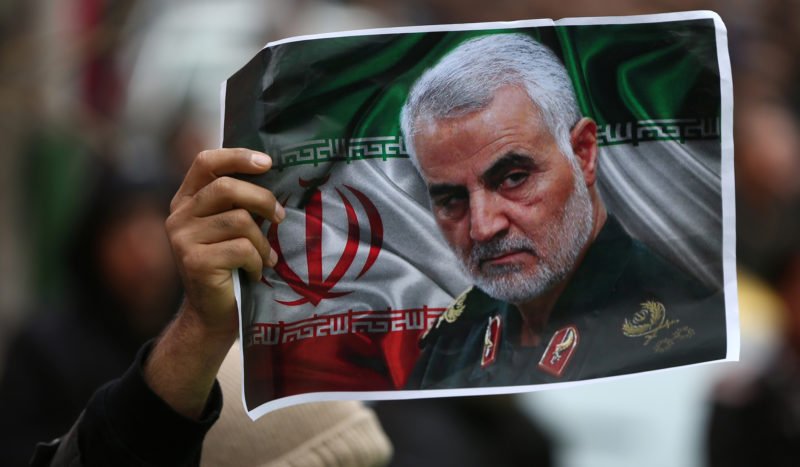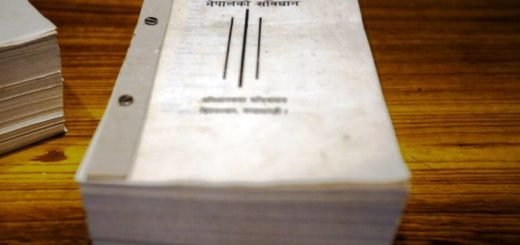Why the battle is over but not the war: Killing of Soleimani and the road ahead in the Middle East

The Middle East has never been a peaceful place in the last few decades. While volumes of books can be and have been written on this, I would be elaborating upon what happened recently and what happens in the immediate future. The current cycle of escalation began with the killing of an American contractor near Kirkuk in Iraq. American lives are not cheap and the United States (U.S.) has made that abundantly clear in the past. One might say that the escalation began with the withdrawal of the U.S. from the Joint Comprehensive Plan of Action, but I will stick to the recent past for that remains the logical beginning of the current cycle of escalation.
Soon after these strikes, the United States embassy was greeted with severe anti-U.S. protests. The onus to react was once again on the United States, and it did. The U.S. responded by striking the convoy of General Qassem Soleimani, the leader of the Islamic Revolutionary Guard Corps (IRGC). Given his influence in the region and his infamous actions, he was the chief strategist for Iran after Ayatollah Khamenei ipso facto. Again, the United States justified its response by saying that there was an imminent threat of attack. For anybody who has been following the Middle-East, the United States’s use of ‘imminent threat of attack’ would ring bells. It is extremely hard to believe that Soleimani was planning something so detrimental that he had to be terminated. It is hard to see the response in isolation of the domestic, political context of the United States. Perhaps, the actual bump in the approval ratings after the killing of the Caliphate Chief al-Baghdadi was lesser than what Team Trump expected.
Also read: How Donald Trump thinks about Iran

While no one can accurately predict what happens next, informed guess-work is the way forward. It is not because we lack professionals or sources to inform and help predict, but because the post-revolution regime has been famous for surprise and unexpected reactions. The funeral rally for the Quds Force leader shows signs that Iran will only have blood against blood. Khamenei cannot retract from this cycle of escalation. But, it will indeed be interesting to see as to how does he balance saving his face by taking revenge and saving his head by keeping his regime intact, for any retaliation will not be acceptable to the United States. Those who say that the IRGC has been taken aback and would not be able to strike back probably have not taken into account the hierarchical structure of the Revolutionary Guards. Had Khamenei not appointed the successor to Soleimani, Esmail Qaani, immediately, quite a few local commanders might have taken it upon themselves to react and respond. The IRGC does not lack leadership, the book ‘Iran Reframed: Anxieties of Power in the Islamic Republic’ by Narges Bajoghli would be a good primer to supplement this claim.
The retaliation was certain, but the Islamic Republic knows its limits better than the United States knows its. While the speculative reports in media suggest several possible responses like cyber attacks, attacks on U.S. civilians, the attack on U.S. bases in the region, attack on ships in the Strait of Hormuz and so on, the current situation suggests otherwise. The Jamkaran Mosque in Qom, Iran saw the hoisting of the red flag 4th January. The hoisting of the red flag, in the Shi’ite tradition implies that the blood, which has been unjustly spilt, will be avenged. While several analysts have called it the declaration of war, I stand at quite some distance from that assertion. This is the theatre where I would expect the Iranian reaction in, hyphenation. The hyphenation will include the tokenistic strikes and tears in eyes. The regime struck bases without killing U.S. personnel, or as the regime claims, killing more than eighty soldiers. And then the indirect conclusion was announced, followed by the Iraqi resolution to get the American forces to leave, in that sense, Khamenei has partially achieved what he sent Soleimani for.
Also read: The only winner of the US-Iran showdown is Russia
While the nuclear enrichment measures might not come in public that soon, they are certain to happen. Iran presents international efforts to limit its nuclear program as another form of warfare, intended to undermine the Islamic Republic. The insecurity of the regime, and hence, the push for the nuclear program, is going to get stronger. It should be noted here that the recent announcements regarding JCPOA by the Iranian government is not the enrichment I am talking about. I am talking about the breakout to the bomb. As it has been said by almost all those who study Iran, it was certain that there will be a response, it was not a question of “if” but “when” and “how” will it respond. The Iranian posture is made worse by the shooting down of the Ukranian passenger airliner, they do not want to look bad to the world right now, the sole reason the International Atomic Energy Agency monitoring still stands.

Given the peculiar situations the United States and Iran find themselves in, the escalation has been arrested. But, this has not happened without consequences, arguably long term. The U.S. policy has seldom been so dicy and twitter-based, they are, perhaps, losing out. Iranian influence and local sympathy in Iraq might make it further difficult to achieve stability in Iraq and the region. Russian Federation will probably not let go off this opportunity to re-establish itself as the dictating power. For India, the end of the battle is welcome, but not without caveats. It must relook where it wants to put its money in the future. Indian stakes in Iran have increased in recent times and have been historically high in the Gulf, primarily due to its diaspora. While the risk of being proven wrong exists, I would even go to the extent of saying that stability in the Middle East is just around the corner. I primarily say this given how this confrontation has almost died down in less than three weeks, the costs of massive confrontation are being understood by both sides, the rest of the world too.
It must also be noted that the limits have been confined to Iran, the United States and the region. The action in the region is bound to be influenced on both sides by players like the United Kingdom, Russia, China, Europe, Israel, Saudi Arabia, India and the United Arab Emirates, who hold stakes in the region. The special invitees to this extravaganza will be the non-state actors existing in the region. But, the forces are unlikely to change what happens in the immediate future, the arms have been put down for now.
If the arms have been put down, why isn’t the US-Iran crisis over? Given the historic volatility and the extreme step of killing Soleimani, only a small spark is required to reignite the fire. If the fire is lit this time, it would not end well for the United States, Iran and the world, and they probably know this.


















